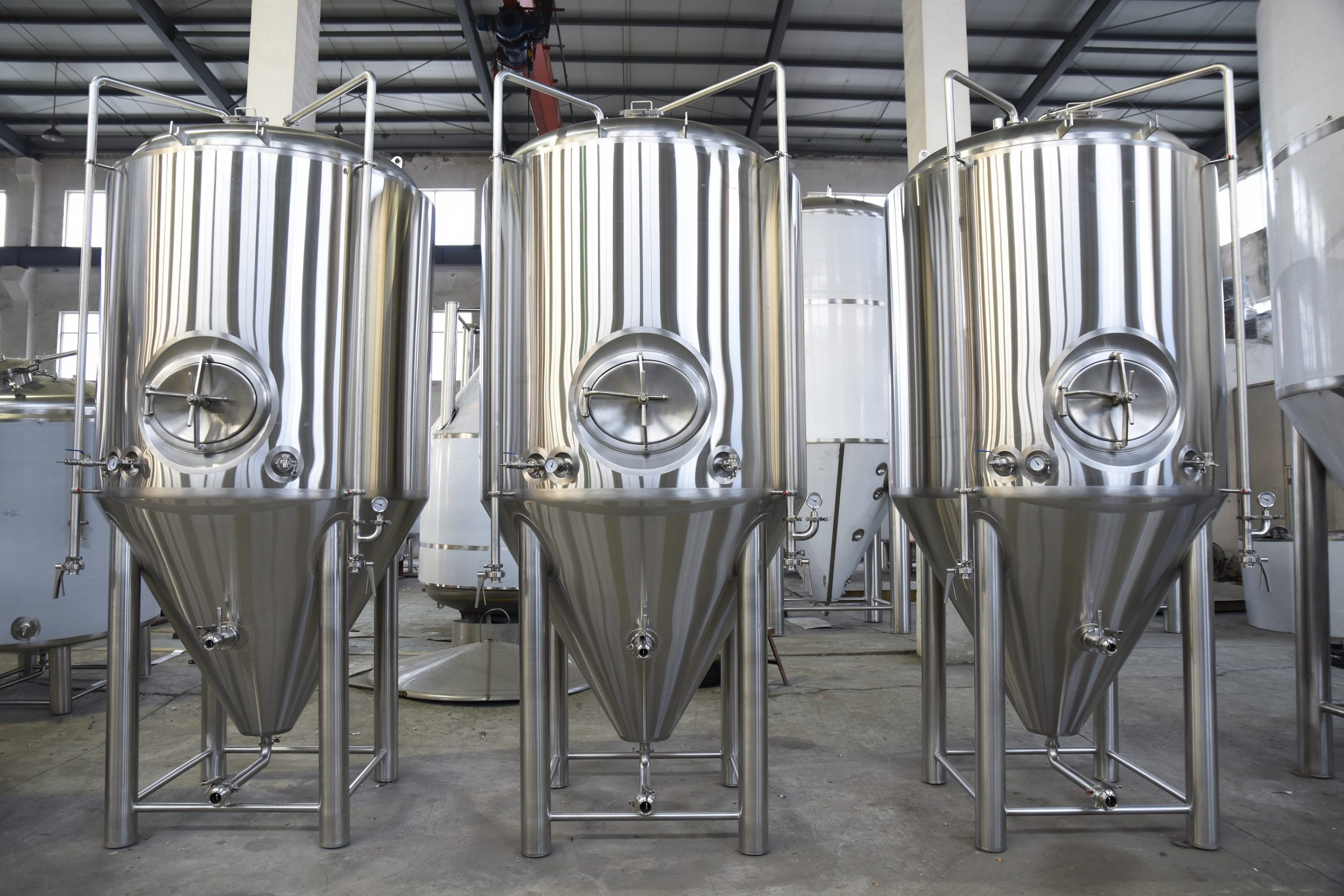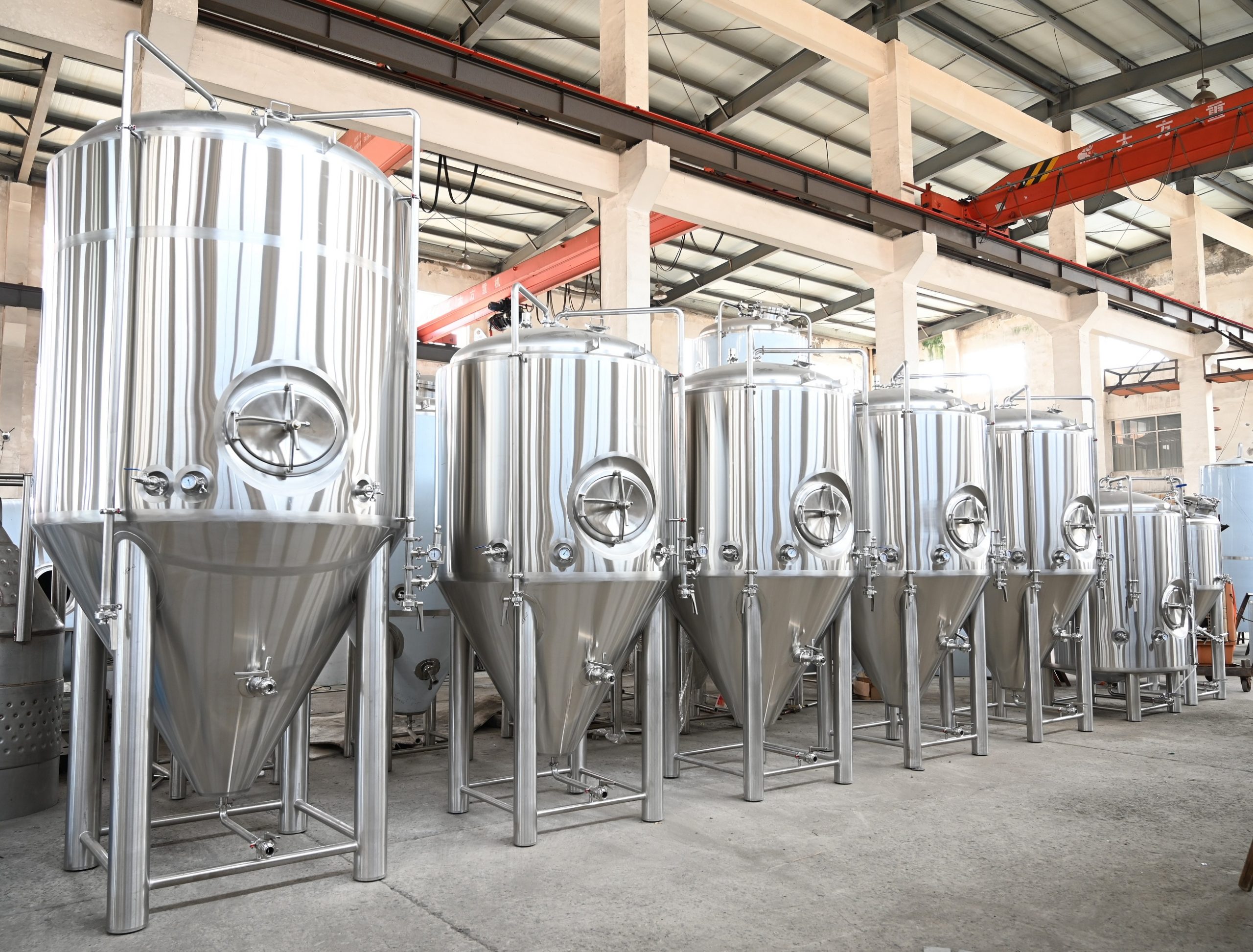
The Difference Between Beer And Wine Yeast Fermentation Tank
2023/10/12

Beer and wine fermentation tanks are used to ferment and condition their respective alcoholic beverages, but there are some differences between the two due to the distinct characteristics of beer and wine production. Here are some of the key differences:
1.Microorganisms:
- Beer: Saccharomyces cerevisiae (brewer’s yeast) is the primary yeast used for beer fermentation. Different strains of yeast are employed to create various beer styles.
- Wine: Various yeast strains, including Saccharomyces cerevisiae and Saccharomyces bayanus, can be used for wine fermentation. Additionally, some winemakers use natural or wild yeasts found on grape skins.
2.Temperature:
- Beer: Fermentation temperatures for beer can vary significantly based on the beer style and yeast strain used. Generally, beer fermentation often occurs at lower temperatures compared to wine, typically around 50-75°F (10-24°C).
- Wine: Wine fermentation temperatures typically range between 50-85°F (10-29°C), depending on the grape variety and wine style. Some wine types, like red wines, may undergo warmer fermentation to extract color and flavor compounds.
3.Fermentation Vessel Design:
- Beer: Beer fermentation tanks are often conical in shape, allowing for the removal of trub and yeast at the bottom of the tank. They may also have a cooling system to control fermentation temperature.
- Wine: Wine fermentation tanks are usually open-top or closed-top vessels. Open-top tanks are used for red wine production to facilitate punching down the grape cap, while closed-top tanks are common for white wine and some red wine production. Both types may have temperature control systems.
4.Nutrient Requirements:
- Beer: Beer yeast generally requires additional nutrients and minerals to support fermentation, as the wort (unfermented beer) often lacks some essential elements needed for yeast health and activity.
- Wine: Grapes contain more nutrients and minerals that are suitable for yeast fermentation. In many cases, winemakers don’t need to add extra nutrients.
5.Oxygen Exposure:
- Beer: Brewers take great care to minimize oxygen exposure during fermentation to prevent off-flavors and maintain freshness. Closed fermentation systems are common in beer production.
- Wine: Oxygen exposure during fermentation can be more acceptable for some wine styles, especially during the early stages of fermentation. It can help with color stabilization and flavor development in certain red wines.
6.Carbonation:
- Beer: Some beer styles, like ales and lagers, are naturally carbonated during fermentation in closed tanks or bottles. For carbonated beers, sealed tanks with pressure relief valves are used.
- Wine: Most wines are still (non-carbonated). Carbonation is typically added after fermentation in a separate process for sparkling wines.
7.Maturation and Aging:
- Beer: Many beer styles undergo maturation and conditioning in fermentation tanks, but aging can also occur in bottles or other vessels. The time spent in fermentation tanks can vary.
- Wine: Wine fermentation tanks are often used for the primary fermentation, and then wines are typically transferred to barrels or other vessels for aging and maturation. The time spent in fermentation tanks for wine is usually shorter than in beer production.
8.Fermentation Time:
- Beer: Beer fermentation times are relatively short, usually lasting a few days to a couple of weeks.
- Wine: Wine fermentation times can vary significantly, from several days to several weeks, depending on the type of wine and fermentation method.

While there are these differences, both beer and wine fermentation tanks play a critical role in the production of their respective beverages, ensuring the conversion of sugars into alcohol and the development of desired flavors and aromas.



















